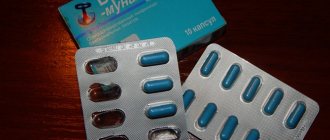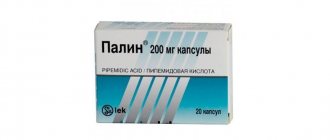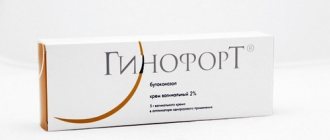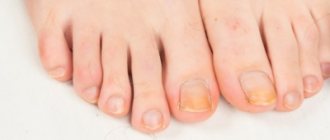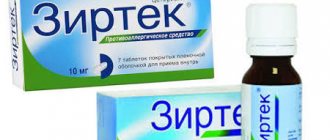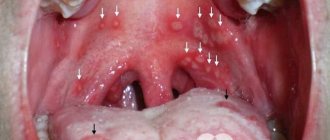Pharmacological properties
The ointment exhibits broad-spectrum antimicrobial activity and has a bactericidal effect on bacteria resistant to antibiotics and other antimicrobial agents. Dioxidin suppresses the activity of the causative agent of dysentery, bacteria of the genus Shigella, effectively acts against salmonella, E. coli, suppresses the activity of streptococci, staphylococci, anaerobic bacteria clostridia, which cause gas gangrene. Suppresses the activity of the causative agent of food toxic infections Proteus vulgaris.
The ointment does not irritate the skin.
Features of using the drug for nasal instillation in children and adults
Despite the frequent use of dioxidin for instillation and rinsing of the nose, a dosage form of the drug intended specifically for this purpose does not yet exist.
A solution of the product is used, the composition of which includes 0.5 or 1% of pure active substance. The solution is sold in pharmacies in 10 ml ampoules.
First you need to open the ampoule using a special file. Then you should pipette the solution and inject a few drops of the drug into each nostril.
Children should administer 1-2 drops of Dioxidin into the nose. This procedure should be repeated 3 times a day. The course of treatment using the drug should not exceed 5 days.
Since the solution contains adrenaline, the use of which is controversial for children. Before starting to instill dioxidine into your nose, you should consult a specialist. The child's body is very sensitive, so it is also important not to exceed the permissible dose of the drug, otherwise there is a high probability of intoxication of the body.
For both children and adults, it is better to choose a 0.5% solution in ampoules for dripping and rinsing the nose. However, if this is not available in the pharmacy, you can also drip a 1% solution of the drug. In this case, it can be diluted with boiled water at room temperature in a 1:1 ratio. If desired, water can be replaced with saline solution.
After using the drug, it is necessary to monitor the well-being of yourself or your child, if the solution was administered to him. If side effects such as severe headaches, dry mucous membranes, chills or fever occur, you should stop using the drug and consult a doctor. It is possible that the body is intolerant to certain components of the solution.
It is important to understand that dioxidin in the nose is a fairly harsh drug, especially for a child’s body. In no case should it be abused, using it to treat a common runny nose during a cold.
The help of the remedy is required only if the patient, whether a child or an adult (it doesn’t really matter), complains of prolonged rhinitis or sinusitis, which is characterized by the presence of a large amount of mucus and pus in the nasal sinuses. If traditional methods cannot cope with such ailments, only then can you resort to using a dioxidine solution for dripping or washing.
Mode of application
Ampoules
The solution is used for administration through a drainage tube, syringe, or catheter. The daily dose for adults is 70 mg of a 1% solution of Dioxidin. The duration of treatment is 3 weeks; if tolerated, longer courses are used. The rest between courses is 1 month.
The drug is used to treat severe infections when other treatments do not give a positive result. Dioxidine solution is used for inhalation with a nebulizer in adults.
For instillation into the nose
Dioxidin is instilled into the nose of children with purulent sinusitis and rhinitis (more details about rhinitis in the “Rhinitis” section on our website). The ampoule of a 1% solution is opened and diluted with a hypertonic solution to obtain a concentration of 0.2%. Dioxidin is dripped into the nose for children - 2 drops, for adults - 3 drops per nostril. According to parents, instilling Dioxidin into the nose of children helps in cases where other medications have been ineffective.
Dioxidin - drops in the ear
Dioxidin is used for instillation into the ear in the treatment of acute purulent otitis. The drug is not ototoxic; reviews of Dioxidin indicate the high effectiveness of the drug.
Inhalation with a nebulizer
The use of Dioxidin for inhalation with a nebulizer can only be prescribed by a pediatrician, based on the child’s condition. The solution is used to treat persistent cough, bronchitis that is not treatable with other medications. Inhalations with Dioxidin can be dangerous for children; the drug can cause bronchospasm.
Dioxidin ointment
Used to treat purulent wounds, trophic ulcers, phlegmon, wounds with osteomyelitis, pustular skin rashes. Apply a thin layer to the surface of the skin, and insert tampons with ointment into the purulent wounds. The daily dose for adults should not be more than 2.5 g. The duration of use of the product is 3 weeks.
Instructions for use
The ointment contains the substance of the same name. For every 20 grams of ointment there is a gram of dioxidine. There are also additional compounds in the composition, but they play a secondary role.
The doctor prescribes dioxidine ointment for various inflammations and purulent processes on the skin, abdominal and chest cavity. This product has a mild effect and has a good effect on the condition of the skin.
The drug is available in the form of a tube containing 30 grams of ointment. The cost of the drug is about 400 rubles.
The main indications indicated for dioxidin ointment in the instructions for use:
- Bacterial infections on the skin caused by various bacteria and microorganisms;
- Superficial wounds on the skin, which are accompanied by an infectious and inflammatory process;
- Deep wounds that do not heal for a long time and are accompanied by a bacterial infection;
- Trophic ulcers on the skin;
- Burns of varying degrees and in different places;
- Phlegmon of the epidermis;
- Purulent skin lesions with osteomyelitis;
- Purulent inflammation in the chest and abdominal cavity;
- Purulent inflammatory processes in the lungs, peritonitis, pleurisy and wounds after operations.
It is important to consider that there are also contraindications:
- Pregnancy, lactation;
- Use in pediatricians;
- Allergy to components;
- Disturbance in the functioning of the adrenal cortex.
Dioxidin ointment is used only after prescription by a doctor and when the diagnosis is substantiated. Dizziness or headache may occur during use. Sometimes dermatitis develops in the area where the drug is applied.
The advantage of dioxidin ointment is that it can be active against even those bacteria against which other antibacterial drugs do not work. Doctors often prescribe it when other means do not give the desired result.
Description of the drug Dioxidin
Dioxidin is an antibacterial drug with a fairly broad spectrum of action. It is used in the treatment of infections caused by dysentery bacillus, Pseudomonas aeruginosa, staphylococci, streptococci, salmonella, pathogenic anaerobes (including causative agents of gas gangrene), strains of bacteria that are resistant to other drugs (including antibiotics).
In addition to its use in the treatment of severe inflammatory processes of various etiologies, cystitis, wounds, postoperative wounds, for the prevention of infectious complications, Dioxidin is used for a runny nose in a child after vasoconstrictor drops, 1 drop of a 0.5% solution 3 times a day. The course of treatment should not exceed 3-5 days.
Vasoconstrictor drops relieve swelling of the mucous membrane, and Dioxidin acts as an antimicrobial drug. Dioxidin does not irritate the nasal mucosa and relieves swelling well, helping to cope with a prolonged runny nose.
Since Dioxidin is non-toxic when applied topically, it is widely used in the practice of treating ENT diseases. Dioxidine in ampoules helps in the treatment of sinusitis, chronic otitis (especially during exacerbations), since it is a strong antiseptic.
For a child, only a 0.5% solution can be used, but in ampoules it is often found in a volume of 1%. Therefore, for children it should be diluted with saline solution.
If the drug has crystallized during storage, it can be restored to its previous form using a steam bath and used further. After opening the ampoule, the solution should be used within 24 hours.
Contraindications for the use of Dioxidin: hypersensitivity to the components of Dioxidin. The drug can be used by children and pregnant women only as prescribed by a doctor.
When Dioxidin is administered intravenously, headaches, chills, a slight increase in temperature, dyspeptic disorders, convulsive muscle contractions, and allergic reactions may occur. Before using Dioxidin, consultation with a specialist is necessary.
Read: The use of Chondrolone is due to primary arthrosis
Dioxidin is a fairly popular drug among consumers, which has a wide list of indications and has virtually no effect on the body.
Dioxidin - application
The drug is often prescribed as the main aid for purulent processes, wounds, burns to treat the affected area. Dioxidin is also indicated for washing internal cavities: peritonitis (in the peritoneum), pleurisy, lung abscesses and inflammation between the membranes of the main respiratory organs. The product will cope with dysentery and Klebsiella bacilli, Pseudomonas aeruginosa and other bacteria. The drug is not prescribed to children under 12 years of age; it is optimal not to use Dioxidin under 18 years of age.
There are options for using the composition to relieve chronic runny nose, sinusitis, and otitis caused by bacteria resistant to other antibiotics. The product will provide not only cleansing of the burned surface when rinsing, but also tissue regeneration. The product is effective even against pathogens resistant to the latest 4th generation drugs. Pharmacies offer different forms of the product for different purposes:
- Ampoules with a one percent solution are used for rinsing (no more than 70 ml/day).
- Three percent ointment should be applied under a bandage to the affected surface only 1 time/day.
- Dioxidin is dripped into the nose of children three times a day, drop by drop - to prevent more serious diseases, in case of chronic inflammatory process. This measure helps to avoid complications of rhinitis, however, pediatricians often select more gentle remedies.
- For chronic runny nose caused by antibiotic-resistant bacteria, it is permissible to drip Dioxidin into the nose of an adult instead of standard vasoconstrictors. The dosage is almost the same. There is no special packaging for nasal use.
- Other indications are empyema of the gallbladder, cystitis, preventive measures against infectious complications.
Compound
The main active ingredient, dioxidin, is essentially a poison, so it is used with caution. The ampoules contain hydroxymethylquinoxaline dioxide (10 mg/ml, each 100 mg); the excipients include only water for injection. The ointment contains:
- main substance – 5 g;
- polyethylene oxide 400 and 1500 – 74.9 and 20 g each;
- nipagin – 0.08 g
- propyl ester of acid (parahydroxybenzoic) – 0.02 g.
Release form
Please note: there is no special bottle for nasal use, because... the introduction of agents against pathogenic microflora is very limited. The main forms are liquids and ointments of different percentages, and the ratio is as follows:
- in ampoules – 0.5 and 1%, 5 and 10 pcs.;
- in ointment - 5% of the substance, in tubes of 30 or 50 grams.
Pharmacodynamics and pharmacokinetics
Hydroxymethylquinoxaline dioxide destroys the membrane cells of pathogens. However, it does not act this way on all microorganisms, so ideally a bacterial culture is needed to determine their sensitivity to the antibiotic. Otherwise, the use of Dioxidin will not be justified. As for children's use, it is important to know: the drug can damage the villi of the mucous membrane, so it is better to avoid injecting it into the nose or wiping it with a cotton pad soaked in the substance. On wounds, the drug is partially absorbed by body cells, but is well excreted by the kidneys.
Indications for use
The main indications for use include all types of burns, rotting wounds and abscesses. In this case, even pathogenic flora resistant to conventional antibiotics is destroyed. However, there are nuances:
- the product is used for abscesses in the abdominal cavity, lungs, pleura - up to 70 ml/day;
- the ointment is applied to the affected surfaces in a thin layer once a day;
- to rinse the nasal sinuses in children, only a 0.5% solution is used, or the substance from an ampoule with a 1% composition is diluted with water in half (in equal proportions);
- in case of severe sepsis and severe inflammation, the presence of microbes in the blood, it is permissible to use a 0.5% solution intravenously - diluting it in 5% glucose or sodium chloride (isotonic solution) - in a concentration of up to 0.1-0, 2%.
"Dioxidin" in the nose - the best remedy for a runny nose
A runny nose can easily develop into sinusitis.
And it is unnecessary to remind impressionable readers about the consequences of the development of this terrible disease: at least once in their life, everyone has heard a terrible story about a disease that can only be gotten rid of by undergoing unpleasant procedures for pumping out fluid. One of the most effective remedies that can prevent the terrible development of the process is the drug “Dioxidin” (in the nose).
What kind of drug is this?
“Dioxidin” is an antibacterial agent that has a negative effect on the activity of many pathogens. The range of its application is quite wide. It is used for such serious diseases as purulent inflammation of the pleura, phlegmon and abscesses. Depending on the situation, the medicine can be used both intravenously and externally. This is not a complete list of the beneficial qualities of the drug “Dioxidin”. You can drip it into your nose without fear. It does not destroy the nasal mucosa, like many other modern medications for the common cold. “Dioxidin” dripped into the nose is especially effective when we are talking about a predisposition to sinusitis. The drug has an anti-inflammatory and anti-edematous effect. “Dioxidin” is injected into the nose, even when it comes to the development of a more serious infection.
When is the solution prescribed?
When antibiotics are not so effective, the drug “Dioxidin” is prescribed - nasal drops. Instructions for use in difficult cases should be accompanied by comments from the attending physician in order to speed up the recovery period.
In what form does the medicine exist?
The drug is available in the form of a 1% or 0.5% solution in 10 ml ampoules. There are no special forms for administering the drug “Dioxidin” into the nose, so the ampoule is simply opened and a regular pipette is used for administration.
Application of medicine
The patient should clear the sinuses of excess mucus and crusts and tilt their head back, and then use a pipette to inject the solution into both nostrils. Doctors recommend dripping 2-3 drops of liquid into each nasal opening for adults and 1-2 drops for children. Instillation should be repeated three times a day. Treatment should not be continued for longer than 3-5 days (maximum one week). A 0.5% solution is not diluted with water, but a more saturated solution (1%) can be diluted with saline. If closed ampoules have formed during storage
crystals, they can be diluted in a water bath. Children and pregnant women should use Dioxidin in the nose with extreme caution. A large number of less dangerous nasal drops have been developed for the youngest patients, so it is recommended that these drops be used by a child only with a doctor’s prescription, although there are no officially registered cases of side effects from their use.
Storage of the drug
Even if you didn’t manage to use up a whole ampoule in a day, you shouldn’t leave it for the next day. Only as a last resort can you plug the neck with cotton wool and place the solution in the refrigerator, and warm the liquid a little before use.

